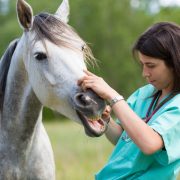Drawing the line in clinical treatment of companion animals: recommendations from an ethics working party
H. Grimm, A. Bergadano, G.C. Musk, K. Otto, P.M. Taylor and J.C. Duncan | Veterinary Record | March 2018
Technological developments, the increasing range of treatment options available in companion animal medicine and the owner’s willingness to pay for treatment mean that veterinary surgeons are regularly confronted with ethical challenges when treating their patients…







Connect with us